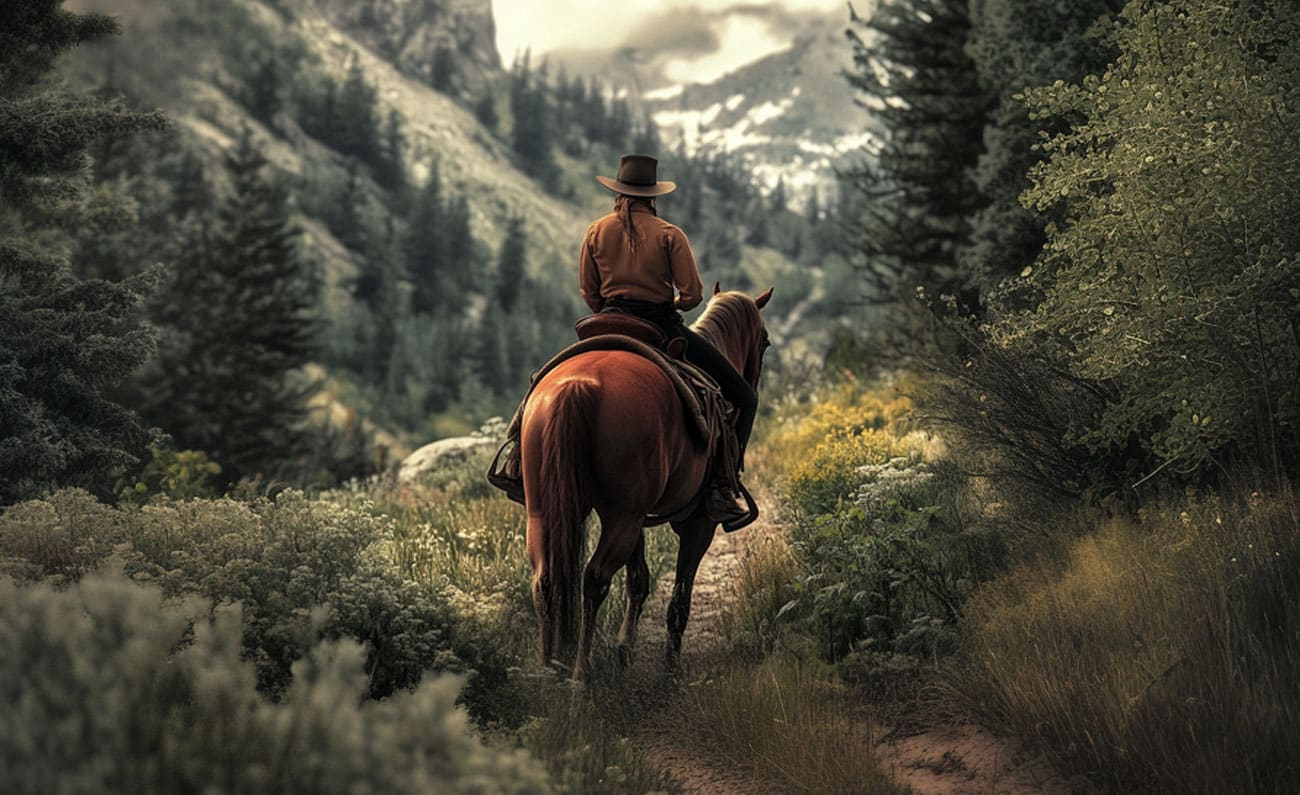
20 Trail Riding Safety Tips
Trail riding is one of the most rewarding experiences you can share with your horse. It offers a unique opportunity to leave the confines of the arena and immerse yourself in nature’s beauty. Whether you’re winding through shaded forest paths, crossing sparkling streams, or galloping across vast open fields, trail riding provides endless adventures and unforgettable memories.
Trail riding isn’t just about the destination; it’s about the journey you take with your horse, trusting each other every step of the way.
Before you set out on your next journey, it’s important to prepare for the unexpected. Each trail brings its own set of challenges, and being ready for whatever comes your way is essential to ensure a safe and enjoyable ride. From a loose shoe to sudden weather changes, preparation is key. With that in mind, here are 20 essential trail riding safety tips to help you and your horse have a safe and successful adventure.
1. Know Your Trail
- Familiarize yourself with the trail before heading out. Check maps or guides to understand the terrain, distance, and any potential hazards like steep inclines or water crossings.
2. Condition Your Horse
- Ensure your horse is fit for the trail. Gradually build up their endurance and strength, especially if the trail involves challenging terrain or a longer distance than usual.
3. Check the Weather
- Always check the weather forecast before setting out. Avoid riding in extreme heat, storms, or other adverse conditions that could put you and your horse at risk.
4. Inspect Your Tack
- Before every ride, thoroughly inspect your tack. Ensure your saddle, bridle, and girth are in good condition and properly fitted to prevent discomfort or accidents.
5. Bring a First Aid Kit
- Carry a small first aid kit for both you and your horse. Include essentials like bandages, antiseptic, and hoof picks to handle minor injuries on the trail.
6. Ride with a Buddy
- Whenever possible, ride with a companion. Having someone with you increases safety in case of an emergency and makes the experience more enjoyable.
7. Wear Proper Attire
- Wear a helmet, boots with a heel, and comfortable clothing suitable for the weather. Bright or reflective clothing is recommended for visibility.
8. Bring a Fully Charged Phone
- Keep a fully charged phone with you for emergencies. Store it in a secure, waterproof case and ensure it’s easily accessible.
9. Plan Your Route and Share It
- Let someone know your planned route and expected return time. This way, help can be sent if you’re overdue.
10. Hydrate and Carry Water
- Bring enough water for both you and your horse, especially on long rides. Dehydration can quickly become a serious issue in hot weather.
11. Know Your Horse’s Limits
- Be mindful of your horse’s fitness and temperament. Don’t push them beyond their limits, and take breaks as needed to avoid exhaustion.
12. Be Aware of Wildlife
- Wildlife encounters are common on trails. Stay calm, keep your distance, and give animals plenty of space to avoid startling your horse.
13. Stay on Marked Trails
- Stick to designated trails to protect both the environment and your safety. Venturing off-trail can lead to getting lost or encountering unexpected obstacles.
14. Practice Safe Mounting and Dismounting
- Always mount and dismount in a safe, level area. Ensure your horse is calm and stationary before getting on or off.
15. Know Basic Navigation
- Learn basic navigation skills, including reading a map and using a compass or GPS. This is crucial if you’re riding in unfamiliar or remote areas.
16. Pack Light but Smart
- Bring only the essentials, but ensure you have what you need, like food, water, a map, and a raincoat. Overpacking can weigh you down, but under packing can leave you unprepared.
17. Respect Other Trail Users
- Be courteous to other trail users, whether they’re hikers, bikers, or other riders. Yield the trail when necessary and communicate clearly to avoid accidents.
18. Watch for Signs of Fatigue
- Monitor your horse for signs of fatigue, such as heavy breathing, excessive sweating, or stumbling. Stop and rest if your horse shows any signs of tiredness.
19. Cool Down Properly
- After your ride, walk your horse to cool them down gradually. Allow them to drink water and relax before untacking and grooming.
20. Trust Your Instincts
- If something feels off, trust your instincts. Whether it’s a change in the weather or an uneasy feeling about the trail, it’s always better to be safe than sorry.
By following these 20 trail riding safety tips, you’ll be well-prepared for any adventure the trail might throw your way. Remember, preparation and awareness are the keys to a safe and enjoyable ride. So, saddle up, stay safe, and enjoy the ride!


